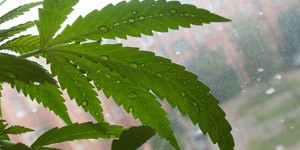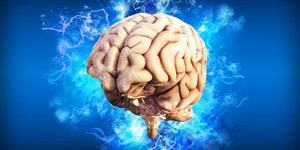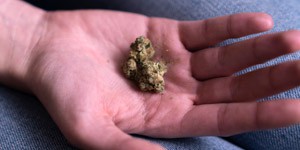By Mariano Garcia de Palau

Born in Barcelona, 17 February 1956. Graduated in medicine and surgery from the University of Barcelona in 1979. For 38 years has worked as an emergency physician in the area of occupational medicine. He became interested in cannabis by chance, and for the last 15 years has studied its therapeutic uses.
Currently he continues to advise on cannabinoid treatments and performs clinical work with patients, collaborates with various organizations and associations, serves as Senior Consultant for Grupo Curativa Colombia and is a spokesperson for the Spanish Medical Cannabis Observatory.
The use of cannabis from a therapeutic point of view differs in many aspects from its recreational use. We use the same plant, the same cannabinoids, but with a different approach. When we use recreational cannabis, clearly most users are looking for the psychoactive effect of THC, which alters our awareness and sensory perception. The power of the plant is basically determined in reference to this effect, without taking into account other effects involved with consumption, such as the analgesic effect, for example. If the consumer has no pain, he or she cannot detect this effect, but they can determine the psychoactive power. Let's take an example: varieties rich in CBD, widely used from the medical point of view, are little consumed by recreational users, basically because the psychoactive effect of THC is minimized, since the CBD modulates the effect of THC.
An important piece of information when analyzing the differences between the recreational and therapeutic use of cannabis is to assess how it is administered, and here we find the huge problem for the recreational user. In most cases, cannabis mixed with tobacco is administered, and a "joint" is burnt. We are facing a very undesirable administration method. The carcinogenic substances generated from the combustion of tobacco + grass + paper might be responsible for multiple pathologies, including lung cancer of course, and although we do not mix it with tobacco, carcinogenic substances continue to be generated from the combustion of the grass.
Patients never use this method of administration, and we went on to recommend the use of vaporizers in order to administer cannabinoids in a clean manner and with very rapid effects. Recreational users could improve the situation by changing the "joint" for a vaporization session, in which we enjoy the true flavours and odours of cannabis, without the combustion that alters these parameters. On the other hand, the patient follows a schedule of administration, with exact doses, and administers it with controlled periodicity, respecting the timeframes. We follow a medical prescription that indicates all these parameters. In many cases, the recreational user consumes on demand, without a specific pattern.
We must think, however, that the recreational use has obviously influenced interest in the study of the plant and, subsequently, we are studying its therapeutic potential. But with few exceptions, growers have turned to genetic improvement related to obtaining varieties with more THC each time, without taking into account other profiles of cannabinoids that are of greater interest due to their use in general.
The history of therapeutic cannabis has two important turning points, the discovery of THC in 1964 by Professor Mechoulam and his team, and subsequently in the 90s the ECS or Endogenous Cannabinoid System was described. In the same way that our organism can synthesize opioids, as we have an endogenous opioid system, we can also produce endogenous cannabinoids. These cannabinoids act through cell-specific receptors specific to the ECS, which also use phytocannabinoids or cannabinoids from the plant, and synthetic cannabinoids created by the pharmaceutical industry.
Are we making therapeutic use whenever we consume cannabis? Are there therapeutic or just recreational cannabis varieties?
In order to start the "debate", we should define the therapeutic use of cannabis. We could define it as the use of cannabis with the sole purpose of curing or improving the symptoms that patients sustain with different diseases. We insist on the symptom concept. In medicine a symptom is the subjective reference that a patient gives to the perception or change that he or she recognizes as anomalous, or caused by a pathological state or illness. For example, pain, dizziness, nausea, fatigue, etc. are symptoms that the patient expresses in different diseases and that, in most cases, constitute warning signs that something is not well.
Therefore, when certain symptoms appear, we have to consult a health professional who can issue a diagnosis of the process so as to inform us of the therapeutic possibilities for treatment. This diagnosis will determine whether the illness can be treated with cannabinoids. We must remember that currently we have no confirmed data on curative effects with the use of cannabinoids, but we can act on diseases that have common symptoms such as pain, lack of appetite, nausea and vomiting, sleep disturbances, anxiety pictures, etc. By treating the symptoms, we improve the patient's quality of life, although we are not treating the cause of the illness; we are acting in a symptomatic way. We can affirm that, like most conventional drugs, very few actually cure diseases and eradicate them; they only improve the symptoms.
The factors to be borne in mind in order to differentiate the recreational from the strictly therapeutic use are numerous. The first differentiating point is the purpose. When we use it recreationally, our purpose is to be able to enjoy the sensory alterations that this plant offers us, without really taking into account the therapeutic advantages of the varieties we consume. I think it is like that in general, although many consumers have also learned which varieties work best for them and the situations in which to use them, as well as their dosage. However, in most cases, patients who use cannabis as a treatment have never ever used it and their Endocannabinoid System has never received phytocannabinoids, so the psychoactive effect of THC is not pleasant or tolerable, and in many cases limits them in their activities. From the therapeutic point of view, the psychoactive effect is not interesting, unlike the purpose of recreational consumption. Patients also have reservations about the possibility of using THC without the appearance of the psychoactive effect, which is possible today to complete the treatment with CBD in different THC / CBD proportions or ratios.
On the other hand, there is another substantial difference, the composition of cannabis used. The boom in the use of Cannabidiol or CBD is very recent, if we think that it was already known since the 40s. But by not having the same psychoactive effect as THC and can even modulate it, this provides a great advantage for its therapeutic use, and it is a disadvantage for its recreational use. Varieties rich in CBD have less psychoactive power than varieties with predominant THC, sometimes in very high percentages, above 20% - 25%, which from the medicinal point of view does not make much sense, since the doses of THC used are much lower than those of many recreational consumers.
But THC is a fundamental cannabinoid if we think about the effects it provides and we still find possible indications for its use. The fact that it is the "illegal" molecule cannot take away its therapeutic merits. We do not use cannabinoids depending on their legal situation, but on their indication for treatment. The illegal status of cannabis may have a political or economic basis, but it has no scientific or medical basis. Actually the situation of cannabis is a historical mistake. Any variety of cannabis contains about 400 different molecules, of which cannabinoids, terpenes, flavonoids, etc., play an important role from a therapeutic point of view. Cannabinoids are of course still terpene phenols and we can say that it is the terpenes that only the cannabis plant synthesizes and produces. There is no other botanical variety that is capable of producing cannabinoids.
Do not forget that terpenes are the molecules that determine the smell and taste of all the existing varieties of cannabis and constitute a defence mechanism for protecting plants against predators. This cannabis smell and taste, which many of us like, is a repellent for some herbivores or insects. Therefore, the final effect of a variety of cannabis depends on many different factors; think about the possible combinations of 200 substances acting at the same time (cannabinoids and terpenes). There are cannabinoids that enhance each other, and we talk about synergy, or cannabinoids that counteract or act in asynergy, with opposite effects.
Can we say then that any variety of cannabis can be used for therapeutic purposes?
The answer would be yes. Any variety of cannabis can be used for therapeutic purposes, but not all varieties will be useful for the different pathologies to be treated. Although it is not the same to use a variety with predominant THC, compared to a variety with predominant CBD, its effects would be different. Here, the terpenes that accompany each variety are decisive, determining the different nuances of the psychoactive effect, for example, or the analgesic or anti-inflammatory power. But there are very few serious and scientifically contrasted studies on terpenes. We know 111 cannabinoids today, which have been identified in the different existing varieties of cannabis. They are not always present in the same proportion or percentages, and may or may not be present depending on the varieties we use. The different cannabinoids have therapeutic properties that are also different in many cases, and depending on the pathology to be treated, we have to use one or other according to their effects. It is essential, then, to have the maximum information about the different varieties of cannabis in relation to their composition in cannabinoids and terpenes. To do so, the largest possible number of varieties should be analyzed by chromatography, to know their composition in cannabinoids and terpenes, and to be able to study the pathologies or illnesses for which the different varieties will be more useful.
Evidently there are varieties of cannabis that, due to their composition in cannabinoids and terpenes, are more useful for treating some pathologies compared to others. For example, varieties that contain THC and CBD in a proportion or 1/1 ratio are more useful for medicinal use, because they are more balanced and their psychoactive effect is much less than in varieties where THC predominates, such as in most of the varieties that have been developed by genetic improvement for recreational use. These varieties also have therapeutic properties, of course, but the indications for their use will be different to other varieties such as those described with a 1/1 ratio.
We know the therapeutic properties of some of the 111 cannabinoids detected, but we still have restricted access to many of them. In fact, THC and CBD are basically used and some other cannabinoids such as CBG, but we still do not have in reach cannabinoids such as THCV, or CBDV, which may be useful in diseases such as diabetes, refractory epilepsy, or Parkinson's disease, for example. We could say that there are more suitable cannabis varieties for therapeutic use than others, even though I insist that all varieties of cannabis can be used for medicinal purposes. There are varieties that due to their composition in cannabinoids and terpenes offer us different therapeutic effects than others and therefore can be used in specific pathologies with greater benefit for the patient. For example, if we have to treat pain, a variety containing THC and CBD in the same proportion will be more effective than a variety that only contains THC. Even then, the variety with THC alone would undoubtedly also be useful to treat pain but the patient would sustain a more intense psychoactive effect than if we used the varieties with a 1/1 ratio.
We can end by saying that any variety of cannabis can be used for therapeutic purposes, but depending on its composition, it will be more useful to treat an illness or pathology than another variety with a different composition.
Cannabinoids are molecules with very low toxicity, so their use is safe and side-effects are predictable and do not pose a problem for most patients.
The legal status of cannabis makes its therapeutic use very difficult, since patients cannot access the necessary products for their treatments, products that should be correctly analyzed, even if we are talking about a herbal product, the herb must be analyzed in order to dose it correctly and always use a product free of contaminants and correctly quantified for its therapeutic use. Here patients enter into a circuit that allows them access to products with CBD that contain less than 0.2% THC, but in many cases at prices that are not accessible to many therapeutic users.
Regarding products with THC, the situation is complicated, since it is very difficult to find correctly analyzed products. Recreational users should reflect on the possibility of consuming cannabis in a clean way, such as the vaporization of grass or even extracts. We can administer cannabis without inhaling carcinogenic substances, a very important advance, always when correctly using the vaporizer.


